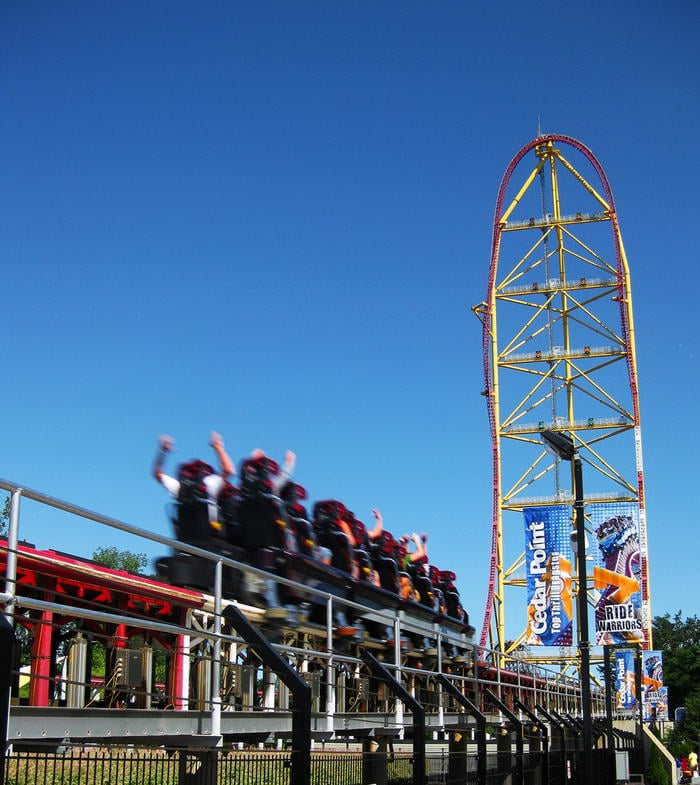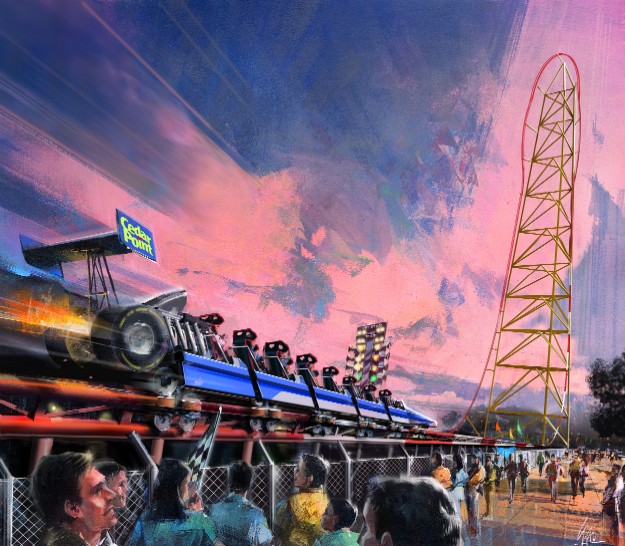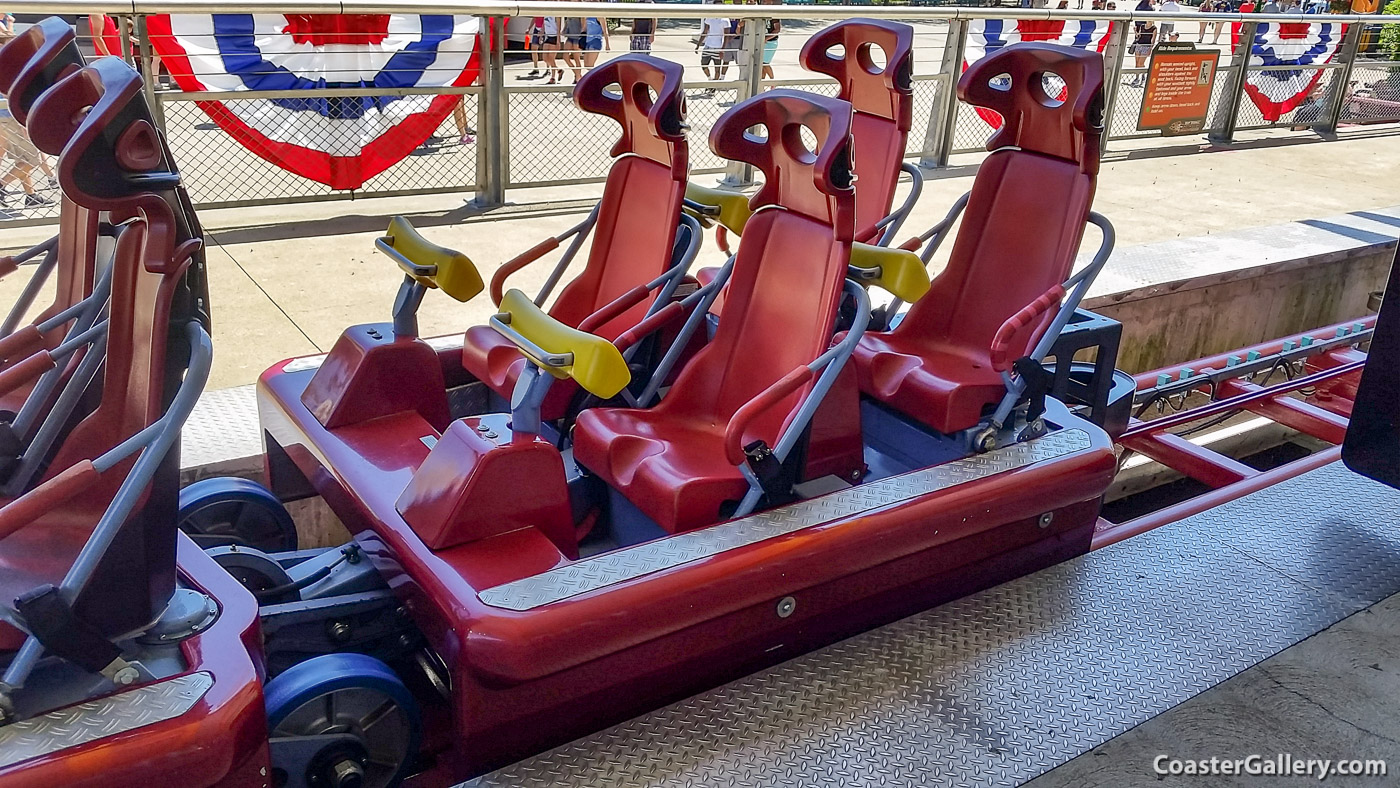
Ohio’s Department of Agriculture (the body responsible for certifying rides at Ohio’s amusement parks and fairs) conducted an investigation not into the cause of the accident, but into whether or not Cedar Point itself had violated state laws in the operation of the ride. Maybe occasional technical difficulties, delayed openings, and unexpected intensity are to be expected when you play with cutting-edge technologies, custom creations, and extreme statistics… but none of it could excuse the event that may be remembered as Dragster’s end. Several notable Intamin rides – like Australia’s Tower of Terror II, Six Flags Magic Mountain’s Green Lantern: First Flight, Kings Dominion’s Lost Legend: Volcano – The Blast Coaster, and Cedar Point’s Wicked Twister have closed in the last five years. The results – Hagrid’s Magical Creatures Motorbike Adventure and the Jurassic World VelociCoaster – are pretty inarguably the kind of customized, personality-filled, intense, technological, and innovative coasters that scream “Intamin.” But particularly the former (with a record seven launches, hold-less track switch, on-ride audio, and two vertical drop tracks) had a standard Intamin inaugural summer of massive downtime, including nearly daily delayed starts, and entire days of non-operation. Though neither Cedar Fair nor Six Flags has worked with Intamin since, Universal made a high profile gamble on the company with back-to-back installations. Located at Kings Dominion in Virginia, Intimidator 305 is best understood as a fusion of Millennium Force (with its iconic first drop and soaring elements) and Maverick (with its slaloming turns, compact layout, and “bucking” directional changes). In 2010, Intamin produced their second (and to date, final) 300-foot gigacoaster. (A weirdly amateurish mishap in the age of computer modeling, especially because anyone watching the point-of-view rendering that includes the heartline roll in question could tell you that it looks like it could break a neck.) Dragster’s follow-up – 2007’s multi-launch, more-than-vertical, bucking, wild Maverick at Cedar Point – had its opening delayed by weeks when testing revealed that one of the ride’s inversions exerted more forces than expected, necessitating its removal and replacement. Inherent in their push for innovation, Intamin’s had several other high-profile starts and stops over the years.

Speaking of betting big on Intamin's more risky and intense rides, before we rejoin the story of Top Thrill Dragster, a brief aside to explore the continued story of Intamin… But sometimes, you have to roll the dice a little bit.” A Roll of the Dice The way I feel right now, the worst decision we ever made was putting that coaster in.

It just hasn’t worked up to our expectations. Alluding to its runner-up, the Declassified Disaster: Disaster Transport, he stated, “Disaster Transport was sort of a laughing type thing, because the year we put it in we still had a great year financially so we could laugh about it, but with Top Thrill Dragster, that was a $25 million roller coaster. In a 2005 “Motley Fool” segment on NPR, Kinzel called Top Thrill Dragster “the worst business decision” he ever made. More to the point, Kinzel cited Dragster as the highest cost-per-rider in the park to operate, and one of the toughest rides to maintain…

(The launch cable would also shred and spray the train with metal shrapnel on Xcelerator in 20, and again on Dragster in 2016.)Īccording to Tim O’Brien’s autobiography, Dick Kinzel: Roller Coaster King of Cedar Point Amusement Park, Kinzel called Top Thrill Dragster his “dumbest decision,” admitting that 50% of guests automatically aren’t interested in riding it. Four riders experienced cuts to their arms and faces. In the ride’s second season – on J– the cable used to accelerate the train frayed during launch, spraying riders with sheared shards of metal. But that May, each of the fifth cars was modified to remove decorative “dragster” spoilers, engines, and large Goodyear tires – reportedly, after one of the decorative rubber tires flew off of the train while it was running after park closure. The fifth car was restored to each train in 2003.

When the ride did work, its trains were modified to include only four of the planned five cars (likely, an effort to lighten the load and more reliably crest the top hat without a rollback) leading to a reported, dismal 800 person per hour capacity.


 0 kommentar(er)
0 kommentar(er)
